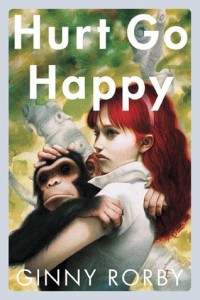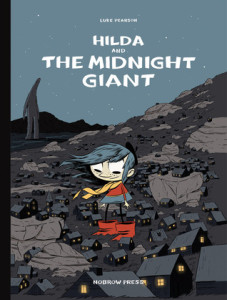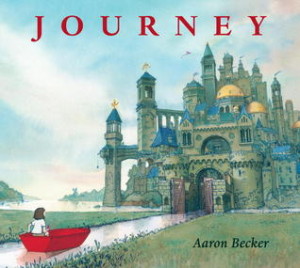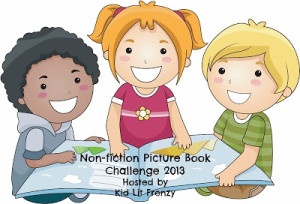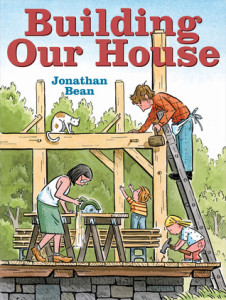This week I am celebrating with my friend and author Ginny Rorby as she receives her award from the Florida Association for Media in Education (FAME) for winning the Sunshine State Young Readers Award (as voted by 6-8 grade students in Florida) for Lost in the River of Grass. To celebrate, I will be reviewing all of her books this week:
Hurt Go Happy
Author: Ginny Rorby
Published August 8th, 2006 by Starscape
Goodreads Summary: Thirteen-year-old Joey Willis is used to being left out of conversations. Though she’s been deaf since the age of six, Joey’s mother has never allowed her to learn sign language. She strains to read the lips of those around her, but often fails.
Everything changes when Joey meets Dr. Charles Mansell and his baby chimpanzee, Sukari. Her new friends use sign language to communicate, and Joey secretly begins to learn to sign. Spending time with Charlie and Sukari, Joey has never been happier. She even starts making friends at school for the first time. But as Joey’s world blooms with possibilities, Charlie’s and Sukari’s choices begin to narrow–until Sukari’s very survival is in doubt.
My Review and Teacher’s Tools for Navigation: This book is so important to me it is even hard to write this review. I have never written one because the book has become so personal to me that I didn’t know how to share my feelings. When I read Hurt Go Happy for the first time, I knew that it was the book that I wanted to share with every student I ever had. Hurt Go Happy shows the importance of empathy for animals, for children and for people with disabilities.
Hurt Go Happy has become the number one community builder in my classroom. After our state test and our Earth day activity with The Lorax we begin our read aloud of Hurt Go Happy. (One of the saddest things about not being in the classroom this year is that I will not be able to have this moment with students.) Not only does the book give me opportunities to work with setting, characterization, cause/effect, prediction, compare/contrast, sequence, and analogies, throughout the book my class participates in conversations about deafness, sign language, chimpanzees, abuse, research facilities, animal abuse, wild animals as pets, survival, parents, school, death, fear, and their future. The conversations are so deep and wonderful. But this is just the beginning. Following the reading of the novel, my students are lucky enough to be able to take part in an interview with the author of Hurt Go Happy, Ginny Rorby. The students generate the questions, vote on which ones to ask and even ask her the questions. Ginny even allows us to send her extra questions and answers them for my students.
The part that really makes students connect to the novel is the field trip that we go on. At the end of the book, the setting changes to a rehab facility called The Center for Great Apes (@CFGA) which, while in the book was in Miami, has moved to Wauchula, FL which is 90 minutes from my school. In the book, you even meet Noelle, a chimp who knows sign language, Kenya, another chimpanzee, and Christopher, an orangutan, who are actually at the center. It is an amazing experience to take the story and turn it into reality.
Hurt Go Happy is a book that I feel not only bring our class together but teaches my students some of the most important lessons for life: to care about every living thing.
Discussion Questions: I have many that would give spoilers, but here are my essential questions for the book: Do you think animal testing is necessary? Defend your answer.; How would being deaf affect your life? How does it affect Joey’s?
We Flagged: “Before she’d lost her hearing, she loved the whisper of wind through pines, and since she had no way of knowing how different it sounded in a redwood forest, the sight of branches swaying re-created the sound in her mind. Even after six and a half years of deafness, she sometimes awoke expecting her hearing to have returned, like her sight, with the dawn.” (p. 11)
Read This If You Loved: Endangered by Eliot Schrefer, The One and Only Ivan by Katherine Applegate, Me…Jane by Patrick McDonnell, Wonderstruck by Brian Selznick, El Deafo by Cece Bell, Half Brother by Kenneth Oppel, Ivan: The Remarkable True Story of the Shopping Mall Gorilla by Katherine Applegate
Recommended For:
